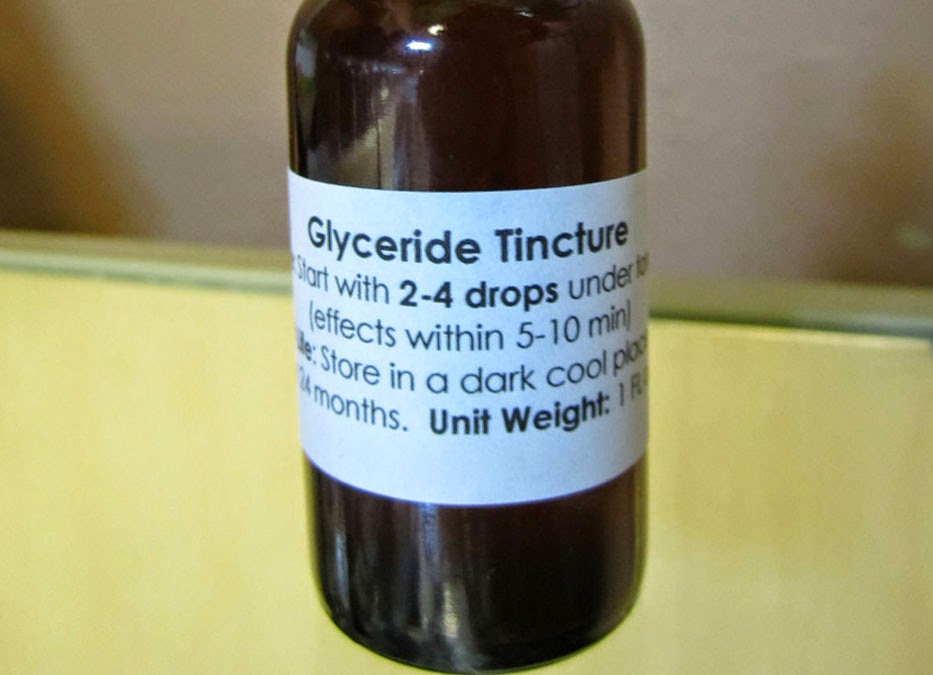Glycerol Tincture
When utilized in 'tincture' method extractions, specifically as a 10% solution, glycerol prevents tannins from precipitating in ethanol extracts of plants tinctures. It is also used as an 'alcohol-free' alternative to ethanol as a solvent in preparing herbal extractions. It is less extractive when utilized in a standard tincture methodology. Glycerol is approximately 30% more slowly absorbed by the body resulting in a much lower glycemic load. Alcohol-based tinctures can also have the alcohol removed and replaced with glycerol for its preserving properties. Such products are not 'alcohol-free' in either a scientific or consumable sense, but should in all instances more accurately be referred to as "Alcohol-Removed" products. Fluid extract manufacturers often extract herbs in hot water before adding glycerin to make glycerites.
When used as a primary 'true' alcohol-free (e.g. no ethanol ever being used) botanical extraction solvent in innovative non-tincture based 'dynamic' methodologies, glycerol has been shown to possess a high degree of extractive versatility for botanicals including removal of numerous constituents and complex compounds, with an extractive power that can rival that of alcohol and water/alcohol solutions.That glycerol possess such high extractive power assumes that glycerol is utilized with dynamic methodologies as opposed to standard passive 'tincturing' methodologies that are better suited to alcohol. Glycerol possesses the intrinsic property of not denaturing or rendering a botanical's constituents inert (as alcohols – i.e. ethanolic (grain) alcohol, methanolic (wood) alcohol, etc., do). Glycerol is a stable preserving agent for botanical extracts that, when utilized in proper concentrations in an extraction solvent base, does not allow inverting or reduction-oxidation of a finished extract's constituents, even over several years. Both glycerol and ethanol are viable preserving agents. Glycerol is bacteriostatic in its action, and ethanol is bactericidal in its action

